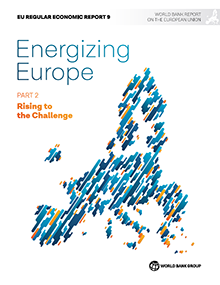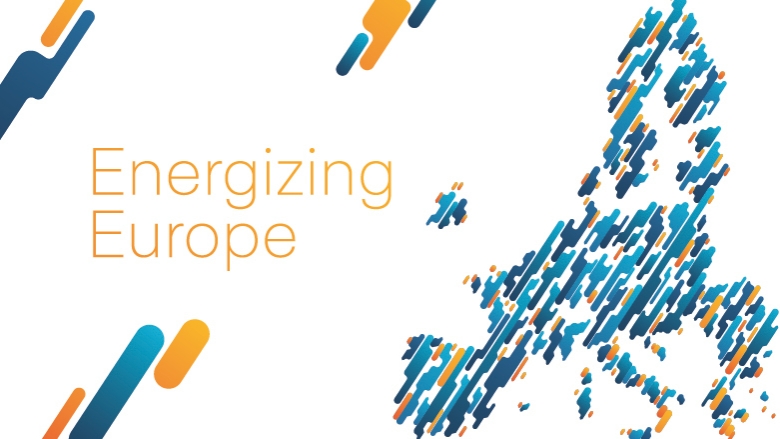
Overview
Over the last two years, the EU has been weathering a series of shocks to its energy supplies and to energy prices. Despite this, the bloc has shown resilience. These shocks have tested EU Member State economies, exposing their vulnerabilities, but also showcasing flexibility and resilience. Some green transition measures have accelerated in the energy sector, and firms have shown an ability to weather price hikes, though the fiscal cost to governments has often been high. However, with the energy sector transition still ongoing, the bloc remains susceptible to risks.
This report aims to quantify the opportunities to reduce Europe’s vulnerabilities to energy shocks at the economy, firm, and household levels. This is done by simulating the macroeconomic effects of drastic shocks to physical supplies (rather than just prices), and then identifying opportunities for firm and household responses that can accelerate transition measures and minimize the impacts of shocks. Importantly, the report highlights the opportunities for energy efficiency measures that firms often leave on the table, which could significantly support the green transition and energy resilience.
Significant decoupling from Russian gas supplies helps mitigate the impact of further potential energy supply shocks. The report deploys a multiregional, multisectoral macroeconomic model to simulate the impact of complete cessation of Russian gas supplies on the economies of four central and eastern European countries: Romania, Bulgaria, Croatia and Poland. These simulations show that the four countries have already achieved significant decoupling from Russian gas and if supplies are disrupted further, the growth impact on these economies is not likely to be large, and can be further mitigated by government support measures.
The findings in this report are drawn from data sources including Eurostat, GTAP, IEA, World Bank Enterprise Survey, and other publicly available datasets, and based on analysis completed in April 2023.
Firms
The report provides a comprehensive look at how EU firms and governments have grappled with rising energy costs, and how targeted measures could alleviate the situation. In particular, the report finds that the industrial sector in the EU has felt the pinch of escalating energy costs, significantly driving up production expenses. However, proactive strategies, coupled with government support, have helped to largely mitigate the negative impact on production output.
Firms have passed through most of the energy price increases while introducing energy efficiency measures. According to a set of qualitative structure interviews across firms in Bulgaria, Croatia, and Poland, the primary responses to the energy cost surge have been price pass-throughs and profit cutbacks rather than reducing output or layoffs. In order to respond to higher energy prices, firms also adopted a range of energy efficiency upgrades, changes in production processes, and even onsite electricity generation (installation of solar PV). However, despite the potential for high energy costs to incentivize energy-saving measures, some firms have halted such investments due to diminished profits and tightened credit conditions.
Quantitative simulations suggest that efficiency improvements play a key role in attenuating the adverse impact of higher prices, but this would also require significant investments for many firms. The report includes a quantitative simulation assessing the role of energy efficiency improvements in mitigating the adverse effects on costs, profits, and employment. It suggests that if less efficient firms could reach median efficiency levels in their sectors, the negative impacts could be significantly reduced. Without efficiency measures, firms might face a 5-10 percent cost increase and a 5 percent average profit decline. However, energy efficiency improvements could substantially reduce or reverse these trends. In terms of employment, without such measures, a reduction of 10-20 percent in full-time workers might be necessary to sustain profits, but with efficiency improvements, this could be largely avoided. The transition towards higher efficiency typically requires substantial capital investment and the adoption of green management practices. About 85 percent of less-efficient firms across thirteen EU countries are significantly undercapitalized compared to their median efficiency counterparts, necessitating increased capital investments. Furthermore, effective management, particularly green management practices, is crucial for achieving energy efficiency.
The energy shock did not lead to a significant adverse impact on the competitiveness of export-intensive sectors by the end of 2022. In order to assess the impact of high energy prices on competitiveness, the report uses 2022 trade data to assess if EU firms in high energy-intensive industries have experienced a disproportional decline in exports. The results suggest that observed decline in exports may be attributed to broader global trade trends rather than a direct consequence of reduced competitiveness, with potential effects on competitiveness possibly emerging later.
Policy interventions need to be targeted, predictable and time bound, in line with price increases. The report recommends that government interventions should be specific and linked to energy price levels, and it highlights ideas such as accelerated depreciation for large firms and conditional grants for SMEs, along with incentives for verifiable energy efficiency improvements and the adoption of green management practices. This approach aims to strike a balance between supporting firms and maintaining fiscal responsibility.
Households
The global surge in energy prices, exacerbated by the economic recovery from the COVID-19 pandemic and the Russian Federation’s invasion of Ukraine, has been significant in EU countries. According to the Eurostat harmonized consumer price index, energy prices in the EU-27 averaged a 55.5 percent increase between March 2021 and March 2023. However, the pass-through of these price shifts to consumer levels has been uneven across EU nations due to differences in market exposure and government price caps. Bulgaria and Croatia have limited increases, thanks to government caps, while Poland and Romania have experienced higher energy price spikes.
EU member states have employed various measures such as energy price caps, excises, and VAT reductions to mitigate the impact of rising energy prices on vulnerable households. These measures, though helpful, have raised questions about their equity and effectiveness. Governments favor price caps for their simplicity, but they may not be the most effective way to help the most vulnerable. Poorer households, particularly those in Bulgaria, Croatia, Poland, and Romania, spend a significant portion of their income on energy, making them particularly vulnerable to price increases. Targeted income support measures, such as subsidies or tax breaks, are more complex to administer but may prove more effective in helping these households adapt to the ongoing inflationary crisis.
Who are particularly vulnerable? The increased energy prices are expected to disproportionately affect low-income households for several reasons. The poorest households spend a higher proportion of their income on energy and are less equipped to handle price shocks due to limited financial resources. They are also more likely to live in poorly insulated housing, increasing their energy needs and exacerbating rising energy costs. Additionally, they may lack access to energy-efficient appliances and renewable energy sources, which can reduce long-term energy expenses. Energy poverty rates vary significantly across different demographic groups, with single elderly households having the highest rate.
Governments can mitigate the impact of increased energy prices on those most affected. Mitigation initiatives should include strategies for identifying those in vulnerable energy poverty and safeguarding their well-being with both short-term and medium-term measures. Governments have the potential to significantly reduce the impact of rising energy prices by implementing targeted transfers that help most affected households, especially in the short term. Moreover, implementing household energy efficiency measures can enhance overall household welfare, particularly in the medium term.
Previous EURER Reports
